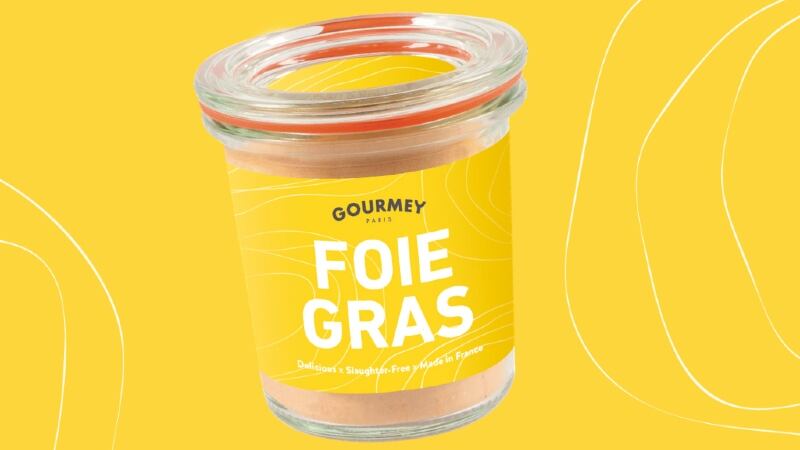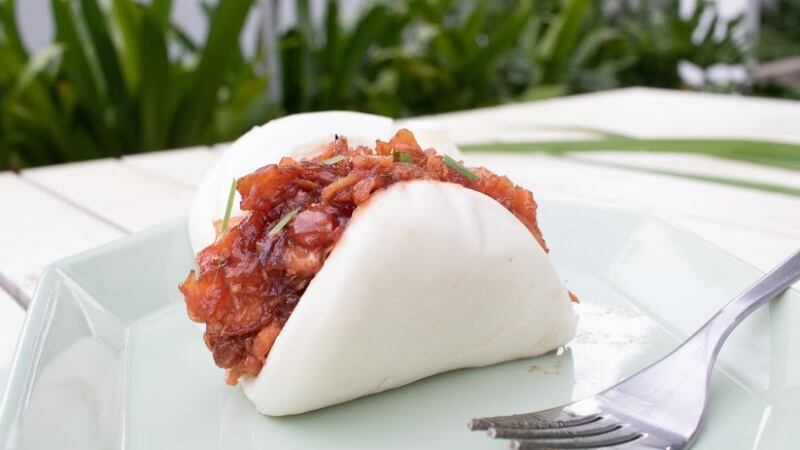Gourmey was only founded last year in Paris, with a team of now-13 people working on reinventing foie gras, a traditional French delicacy that has faced increasing challenges in the face of widespread bans and discontent consumers after it was revealed that ducks/geese were force-fed in order to produce the fatty livers making this.
Globally, 17 countries have already prohibited the production of foie gras for ethical concerns around force-feeding, and few months ago, one of the world’s most prominent food delicacy capitals New York passed legislation prohibiting its consumption, a move that had already been taken in California and India.
“[Foie gras] is a US$2bn market facing an existential crisis,” Gourmey CEO and Co-Counder Nicolas Morin-Forest told FoodNavigator-Asia, adding that over 1,000 restaurants are expected to be affected by New York’s recent ban.
“Even in France, our love story with foie gras is turning cold with 75% of French consumers now uncomfortable with the way the delicacy is produced and seeking a replacement. The need for an alternative is hence booming. It’s time to untangle foie gras and meat in general from controversy and climate change.”
“Cultured foie gras allows us to preserve a culinary heritage and bring it forward to the 21st century. Foie gras needs to reinvent itself if it does not want to become a relic of the past and this is exactly what we are doing - It is our way to show that innovation and tradition can go hand in hand.”
Morin-Forest also told us that Gourmey has its eye on the Asian market not only because of the market size, but also because countries such as Singapore have shown strong interest in the cell-based meat sector.
“Singapore is a very appealing market to begin with as there is a strong appetite for gastronomy delights and food innovation in Singapore.” he said.
“Even more importantly for Gourmey, the country wants to take the lead in the regulation of cultured meat products as this technology is aligned with national goals of producing locally 30% of food consumed by 2030.
“The current pandemic has only strengthened the need of a more local, secure and resilient food supply chain and cultured proteins are one of the most promising answers.”
From a more macro point-of-view, the company is also looking to develop other cultured duck-related products in the future, and believes that China will be a good market to look at for this.
“The foie gras market is growing rapidly in Asia and beyond this product, China is for instance the biggest market for duck meat,” he said.
“We are working with duck cell lines [and looking at developing] other duck meat products down the road. Overall though, global meat demand is set to increase by 70% by 2050 and Asia will be driving most of this growth. Hence any sustainable protein company willing to have a strong positive impact on the world should be looking at the Asian market.”
Faster than most
Gourmey develops its foie gras using duck egg cells, a few of which are extracted from freshly laid eggs and placed into a cultivator to be cultured with basic nutrients and multiply.
“We then adjust the nutrients and slightly increase the level of healthy plant-based fats to replicate the effect of force-feeding directly at the cell level, without any cruelty,” explained Morin-Forest.
“We eventually harvest duck fatty liver cells that we can cook with other ingredients such as white wild pepper, pink berries and a hint of Cognac to serve a rich and tasty duck foie gras.
“Once at scale, we estimate our process should take three to four weeks from cell to fork, compared to three months from hatching to slaughter in duck farming. It’s a faster and much more sustainable process overall with only a fraction of the resources needed such as water or input calories.”
As for the other duck meat products, he added that the platform Gourmey is developing around duck stem cells is ‘versatile’ and has ‘infinite’ applications.
“Among the many developments within our reach, we are looking at the production of hybrid products using our liver cells as a unique fat source to bridge the gap between plant-based and animal-based products (as fat is the missing piece responsible for the unique animal flavour),” he said.
“With our cells ability to specialise into any cell type, including muscle cells, we will also bring more complex cuts of meat at some point once the scaffold-based cultured meat technologies will have matured.”
The foie gras itself is expected to be a ‘simpler’ product given its structure, which means it is likely to take less time to develop and also become price-competitive with traditional products.
“Foie gras is not a meat product as such; it’s a liver product. Its texture is compact and buttery, not fibrous, hence less complex than that of a cut of meat,” said Morin-Forest.
“Unlike other companies working on muscle-based products, this allows us to cultivate our cells in a simpler set up, without the need to develop a scaffold-based production process, which is one of the main bottlenecks for the entire cultured meat industry when it comes to scaling up.
“We also have a strong business case as foie gras is the most premium unstructured animal product on the market, commonly sold at US$50 to US$70 per pound - we believe we will be one of the very few cultured meat companies, if not the only one, with a price-competitive product at launch.”
Safety aspects
Although ethical concerns are likely to be the strongest driver for consumers to choose cell-absed foie gras, Gourmey believes that the food safety benefits are also a major draw.
“We think anyone who loves foie gras and meat in general but is not comfortable with its impact, whether on the environment, on animals, because of antibiotics will engage with cultured meat products,” said Morin-Forest.
“Looking at the current context, cultured meat, along with other alternative proteins, has immense potential to decrease the likelihood of future zoonosis and pandemics by decreasing human-animal interactions for food.”
Unsurprisingly, regulatory challenges were cited as a key concern for the firm given that most countries worldwide have yet to lay down rules on governing the cultured meat sector, but he added that ‘all geographies are making good progress’ so far, and held out hope that in places like New York where traditional foie gras is banned, Gourmey holds an advantage.
“We like the idea of being the only legal foie gras producer [in places like] California and New York,” he said.
Although he declined to reveal a specific launch date just yet, Morin-Forest added that the team is currently working on a lab-scale foie gras prototype which it will showcase in the next several months.





